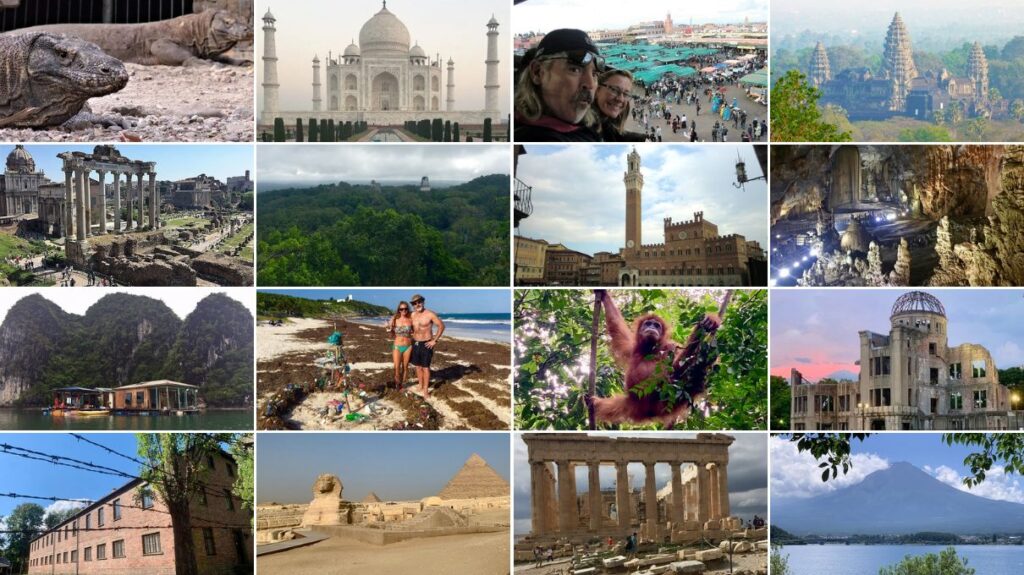Our budget slow travel destinations often are places designated as having ‘outstanding universal value’ to humanity. That’s how UNESCO determines its World Heritage Sites, of which there are 1,248! We have been to 59 in early retirement as of publication. I’ve whittled our list down to my top 10 personal favorites as I celebrate 10 years of travel.
Actually, three places in my top 10 have ties, so it’s really a top 13 list. And there are four weighty honorable mentions. So I got my 59 places down to 17 favorites, if the honorable mentions are included. The remaining 42 UNESCO World Heritage Sites are listed in descending order.
It’s a totally subjective list – spouse Theo has different favorites, and you might, too!
This was a tough list to make, because these are all fantastic places to visit. And we still plan to see so many more World Heritage Sites in the decade ahead so check back in 10 years – maybe I’ll have different favorites.
Top 10 UNESCO World Heritage Sites in 10 years
- 10 – Tropical Rainforest Heritage of Sumatra
- 9 – Komodo National Park
- 8 – Marrakech Medina
- 7 – Sian Ka’an
- 6 – Ha Long Bay and Cat Ba Archipelago
- 5 – Tikal National Park
- 4 – Historic Center of Rome
- 3 – Taj Mahal
- 2 – Hiroshima Peace Memorial (Genbaku Dome)
- 1 – Memphis and its Necropolis – the Pyramid Fields from Giza to Dahshur
- Honorable mention 1: Florence
- Honorable mention 2: Fujisan (Mt. Fuji)
- Honorable mention 3: Auschwitz Birkenau German Concentration and Extermination Camp
- Honorable mention 4: Siena Historic Center
- —-Keep reading—-
10 – Tropical Rainforest Heritage of Sumatra

This Indonesian treasure is in danger. It’s on the list for the incredible diverse wildlife like orangutans, as well as the rainforest itself. It’s all in danger because of palm oil plantations. Native trees are chopped down for palm farms, which suck up ridiculous amounts of water and displace animals. But palm oil farms mean paychecks for locals in an area full of poverty. This is one place where sustainable tourism – like our 2025 jungle trek – is a great thing. Instead of finding endangered orangutans on the black market, you can find them in the trees — and help keep them there.
9 – Komodo National Park
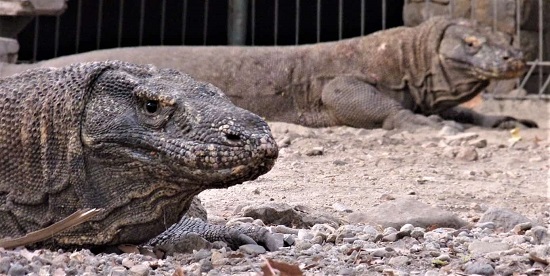
Another treasure in Indonesia makes the list because there’s no place like it on Earth. Thousands of the endangered Komodo Lizards live on these volcanic islands. These giant lizards can grow up to three meters in length, and they are aggressive. This why they’re commonly called ‘dragons’. The Komodo dragons are important to evolutionary scientists.
The Komodo Islands are so special, the Indonesian government has for years considered raising the admission price so much that only the wealthy would be able to visit the park. Prices have increased since our visit in 2018, but most people reading this could still afford it. As of this writing, the official site doesn’t have the price listed. Tour companies sell entrance tickets for around $44, which does not include the price of their tour boats, which you need because you cannot just show up on an island on our own. You’ll have to search around for the best deal.
8 – Marrakech Medina

Marrakech’s historic significance as a cultural and religious center of the western Muslim world began around the year 1070. Much of the Moroccan city’s ancient center is the same, and the today the famous Jamaâ El Fna Square is a lively place that can overload the senses – tea, textiles, snake charmers, mosque calls, street food, jewelry, souvenirs, restaurants. The square, kasbah, special gates and more put this on the list. Spending time in the maze of streets and alleys was a highlight of my year back in 2018.
Tied at 8 – Angkor
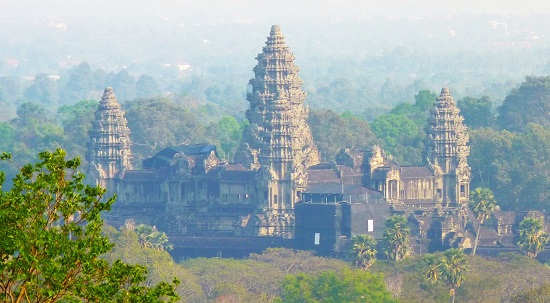
Angkor (Wat) Archaeological Park in Cambodia has remains from the Khmer Empire from the 9th to 15th centuries. Famous remains include Angkor Wat and Bayon Temple. Many reservoirs, canals, temples and communication routes run through the site in addition to archaeological ruins and culturally significant sculptures. The park covers 150 square miles, and is home to villages with ancestral connections to Angkor.
I recommend hiring a tuktuk driver to see some of those small villages when you need a cold drink away from sweltery hot and humid touristy temples. We recommend our friend Nin. Contact us for his info.
7 – Sian Ka’an
Sian Ka’an is a biosphere that is the largest protected area in Mexico. It features incredible diversity, including jaguars. Sian Ka’an means “Origin of the Sky” in Mayan. I’d actually been to this wildlife refuge a number of times long before early retirement. In around 2004, we journeyed around the biosphere to get to a small village named Punta Allen. The whole region is a magical place.
I also went to Sian Ka’an in early retirement on my bicycle, in the months before Tedly retired and joined me, but I didn’t venture too far in alone. Today, I hope that it’s not overrun with sargassum (invasive seaweed) and plastic trash. Tulum is adjacent to Sian Ka’an, and pollution was overrunning Tulum’s beach when I was last there in 2015.
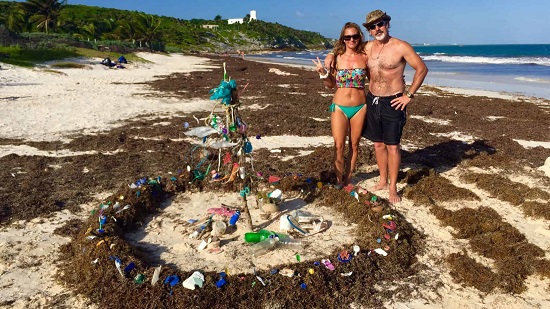
6 – Ha Long Bay and Cat Ba Archipelago
We once stayed on a floating house at this site in Vietnam in 2019. Incredible limestone islands soar out of the sea. It’s the most extensive example of sea karst formations on our planet. While most people pass through on a tour boat, the area offers plenty of places to explore by kayak along the islands, with occasional sandy beaches. Enjoy bioluminescence during night swims – just watch out for jellyfish. It’s definitely worth a stay.
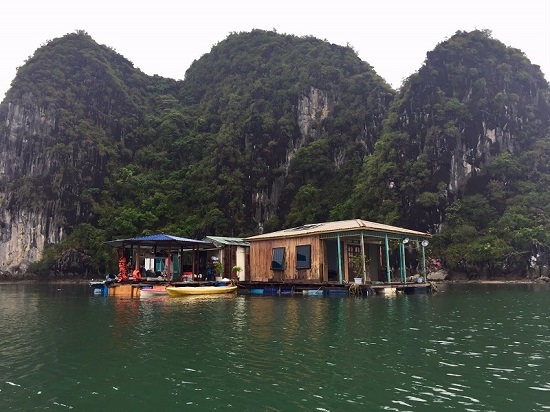
Big budget travel tip: Ha Long Bay near Cat Ba Island is the more recognized side of the bay. Even the official UNESCO World Heritage Site uses the name “Ha Long Bay”. However, due to a provincial the bay is divided between Ha Long Bay and the less expensive, less taxed Lan Ha Bay. Same bay, same water, same islands, same UNESCO site, better prices.
Tied at 6 – Phong Nha National Park
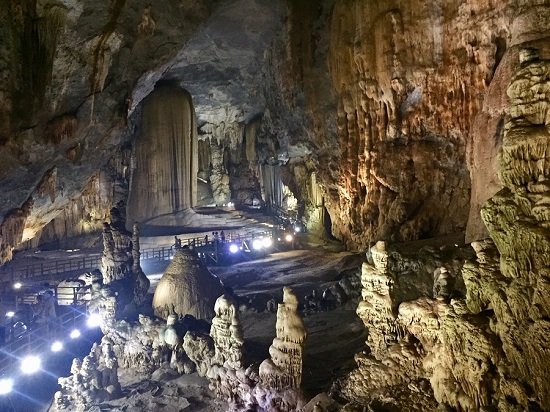
This is the land version of Ha Long Bay. Karst formations here and an extensive cave network put this Vietnamese park on the UNESCO World Heritage list. Dramatic cliffs and caves began to form nearly half a billion years ago. The world’s largest cave is in Phong Nha – and in 2019 we met the man who discovered it! Though we didn’t go that deep underground, there are plenty of places to step into Earth and be blown away. It’s a really well done site, with lights and platforms and railings. Note, however, that the general area is not developed and you won’t be near any large city.
5 – Tikal National Park
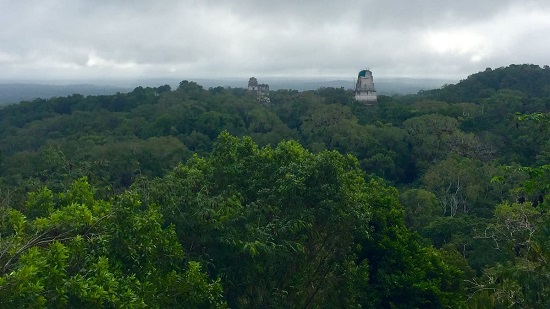
Spread out in the Guatemalan jungle, this was a major city for the Mayan people from the 6th century B.C. to about the 10th century A.D. Many cultural discoveries were made at this site to teach us about the ancient Mayan culture. This is one of the few World Heritage Sites that made the list for both natural and cultural criteria. It spans 220 square miles and has extraordinary biodiversity along with archaeological significance. I loved our visit – and the view from the top of Temple IV – in 2016.
4 – Historic Center of Rome
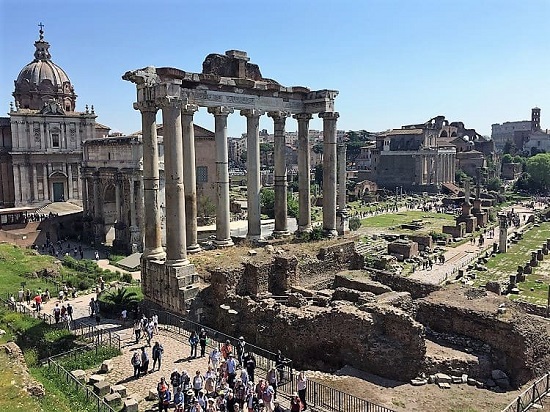
Rome wasn’t built in a day, as they say. It began in 753 B.C. Ancient Rome was the capital of the mighty Roman Empire. Later, it was built up in the 4th century by Christian Rome – a new reign of rulers. There are so many sites in the center of Rome on this list, including the Roman Forum and the Colosseum. We enjoyed them all in 2018. Indeed, the ancient ruins and religious significance are incredibly impressive — yet also historically oppressive, if you’re not a part of the organized Christian world.
3 – Taj Mahal
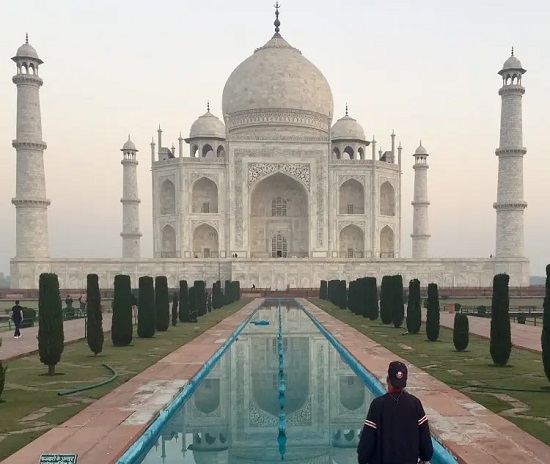
A love story. That’s really what the Taj Mahal is – the architectural embodiment of a man’s love for a woman. The Taj Mahal is a white marble mausoleum that an emperor built to honor his wife. The carefully crafted treasure really does change color under the sun’s changing position, as we witnessed in 2022.
Unfortunately, air pollution threatens it. Cars are not allowed around the area, to save the Taj Mahal from exhaust. And yet, Hindu cremations happen just up the river and the smoke smacks the sides every day. Muslims say it’s a demonstration of disrespect. Hindus say the Muslim site was built atop an Hindu site. It’s a simmering religious divide throughout India.
Tied at 3 – Acropolis, Athens
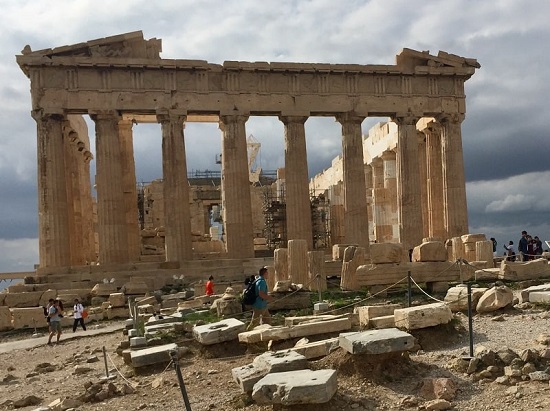
There is something so special about this site. During our 2018 visit, I felt such immense respect for the greatest architectural, artistic, and philosophical gifts to come from Greek antiquity. The site dates back 3,300 years. On this hill, the ideas of democracy and freedom of expression and speech were born . These values still stand today, though I feel they need reinforcement, just like the Parthenon and other structures on the hill, which are continuously monitored for repairs.
2 – Hiroshima Peace Memorial (Genbaku Dome)
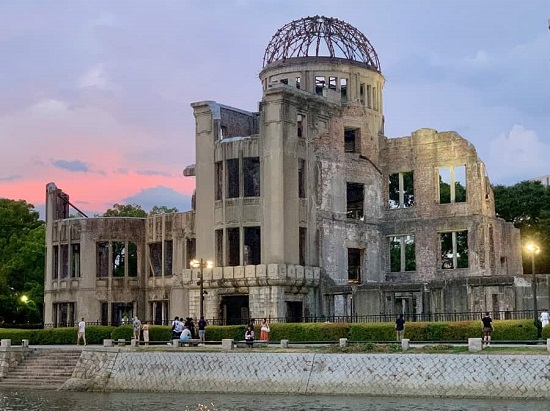
This place is intense. The atomic bomb over Hiroshima exploded near this famous dome. It was the only building near ground zero that remained partially standing, and we were moved to tears standing before it in 2024. The dome has been maintained as it was exactly after the explosion, with minimal support added to keep it standing. The dome is at the edge of the Peace Park, and surrounded modern Hiroshima, which exists today because the bomb exploded in the air, it didn’t hit the ground.
If we don’t heed its warning of nuclear dangers, if we don’t get its message of hope for peace, if we destroy ourselves, then every single thing on this list will be lost, and then what’s the point?
1 – Memphis and its Necropolis – the Pyramid Fields from Giza to Dahshur
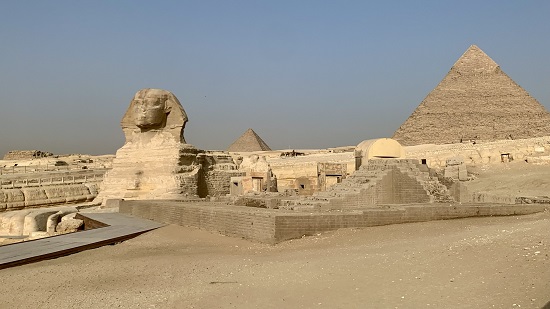
The ingenuity of the ancient Egyptians captured my imagination and travel dreams for most of my life. Who doesn’t want to see the pyramids!? The historic effort of a human civilization that began five thousand years ago. We explored the Giza pyramids and several others at Dahshur. Temples, crypts, tombs. Gods, gold, art. Paintings, stories, dynasties. All of it – wildly wondrous.
4 Honorable mentions
Florence – 1
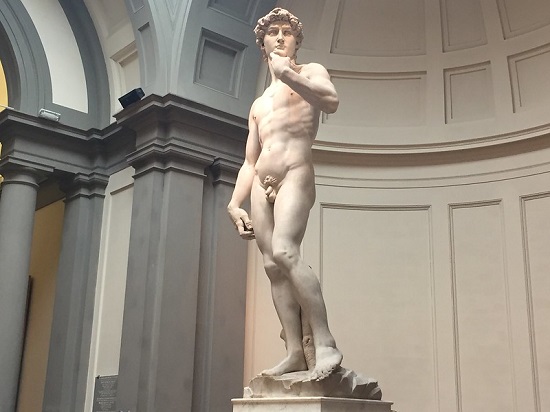
This central Tuscany city is on the list for its outstanding universal value in architecture and art. Buildings like the Cathedral of Santa Maria del Fiore, the Palazzo Vecchio, and more are a testament to hundreds of years of artistic design. It’s also what is inside remarkable buildings likes the Uffizi gallery – the artistic works of the great masters such as Botticelli and Michelangelo. In fact, the most amazing art work I’ve ever seen, is David, by Michelangelo. Florence is what happens when man decides art is more valuable than war.
Fujisan (Mt. Fuju) 2
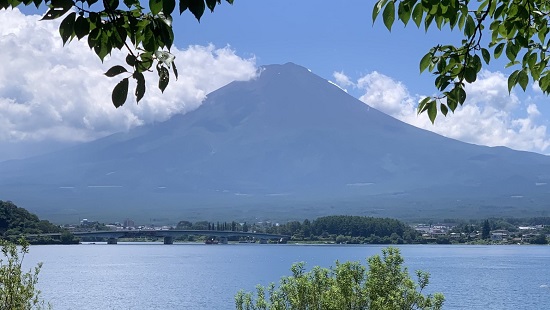
Mt. Fuji in Japan is on the list for being a sacred place and a great source of inspiration. I didn’t see lava trees or springs and waterfalls because we hiked up and down in one day – starting from about the middle of the volcano, where a public bus drops you off at the tourist center. I missed a lot of the beauty because I was focused on my feet climbing up and marching down during our hike in 2024, as I hoped my aging knees wouldn’t give out. If I’d gone slower to enjoy where I was, I bet I would have been more artistically inspired. Note: you can rent a bed in a shelter on the mountain at different elevation stops.
Auschwitz Birkenau German Concentration and Extermination Camp – 3

The most dastardly of Nazi Germany’s camps eerily stands in southern Poland just west of Krakow. An estimated 1.5 million people – mostly Jews – were murdered at this site following years of degradation, humiliation, starvation and forced labor. Auschwitz Birkenau is on this list because the site is evidence of genocide. The site made the list with the hope that the world would never let this happen again. Hopes be dashed, however, because there have been more genocidal efforts against other ethnic groups since then. I wonder if our world heritage will ever not include evil?
Siena Historic Center – 4
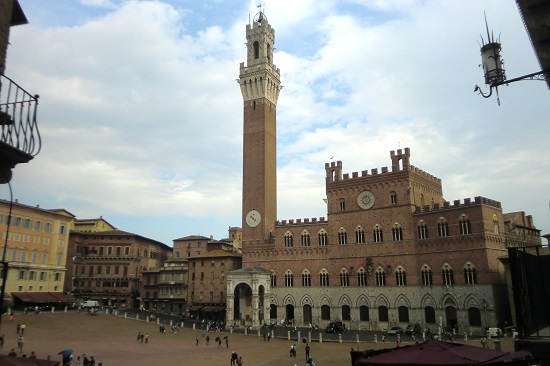
This medieval city is on the list because it is largely still intact — wars didn’t destroy it, and also because city planners have managed modern urban growth well. We went in 2018, and I’d love to go back to experience the famous horse race called Palio di Siena, which is closely tied to the city’s World Heritage status.
42 more amazing World Heritage Sites visited in 10 years
Last but not least, here are the other 42 UNESCO World Heritage Sites we’ve been to in early retirement. My personal favorites are first – but they’re all worth visiting!
Venice – Italy
Mahabodhi Temple Complex at Bodh Gaya – where Siddhartha Gautama attained enlightenment and became ‘Buddha’ in India
Prague Historic Centre – Czechia
Historic Areas of Istanbul – Turkiye
Old City of Dubrovnik – Croatia
Works of Antoni Gaudi – in and around Barcelona, Spain, seven sites ranging from parks to churches and apartment buildings, done by the architectural artist who embraced themes of nature and God
Sintra – several culturally significant Portuguese palaces and castles that have been either restored or preserved
Natural and Cultural Region of Historic Kotor – set on a stunning natural harbor in Montenegro, this Venetian city was an important artistic and commercial center
Antigua, Guatemala – under the shadow of volcanoes, this is a culturally significant city was founded in the 16th century
Royal Tombs of the Joseon Dynasty – historic and unusual Korean tombs dating back 5,000 years!
Pre-Hispanic City of Teotihuacan* – an amazing site 50 kilometers north of Mexico City that pre-dated the Aztec Empire by 1,000 years, includes the historic, massive Pyramid of the Sun
Historic Fortified Town of Campeche – 16th century walls around a well-preserved – and colorful – Mexican city
Historic Monuments of Ancient Kyoto – 17 sites in the city from the 10th to 17th centuries attest to the cultural significance of this ancient Japanese city
Gyeongju Historic Areas – incredible examples of Korean Buddhist art and architecture that is like a ‘museum without walls’
Budapest – Hungary (several sites around the city, including the Danube River banks)
Historic Center of Oaxaca and Archaeological Site of Monte Albán – Mexico
Old Town of Corfu – Greece
Krakow Historic Center – Europe’s largest market square is just one reason this Polish city made the list
Goreme National Park and Rock Sites of Cappadocia – Turkiye
Nalanda, Bihar – archeological ruins in India recognized as the world’s first university, dating back to 1,300 B.C.
Hospicio Cabañas of Guadalajara – built in the 19th century to provide care to the needy, and painted in murals by 20th century artist José Clemente Orozco, one of the greatest Mexican muralists
Kathmandu Valley – including the Boudhanath Stupa, one of the largest and a spiritual center for Tibetan Buddhists
Jantar Mantar – an ancient observatory in India that features the world’s largest stone sundial
Fez Medina – Morocco
Mahabilapuram – India
Tower of Belem – Portugal
Red Fort Complex – India
Warsaw Historic Center – as an outstanding example of near total reconstruction not only in Poland, but in the world
Jaipur City – India
Ancient City of Nessebar – Bulgaria
Islands and Protected Areas of the Gulf of California – Mexico
Melaka and George Town, Historic Cities of the Straits of Malacca – these Malaysian cities are actually hundreds of miles apart: Melaka features influences from 15th-century Malay sultanate and the Portuguese and Dutch periods beginning in the early 16th century; George Town is on Penang Island and features British influence from the end of the 18th century
Spissky Hrad (Spis Castle) – Slovakia
Seville – Spain (actually, 3 sites)
Hue Monuments – Vietnam
Palace of Westminster – Great Britain
Tower of London – Great Britain
Museum Island – Germany
Cultural Landscape of Bali Province – Indonesia
Cinque Terre – Italy
Elelphanta caves – India
Pisa – Italy
*We visited many other Mexican ruins on the UNESCO list before early retirement such as Chichen Itza, Calakmul, Uxmal.
Thanks for reading, “Top 10 UNESCO World Heritage Sites in 10 years (& then some).”
More 10-year travel anniversary lists:


